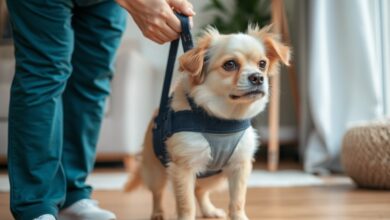Are American Bullies Good with Other Dogs? Socialization Tips
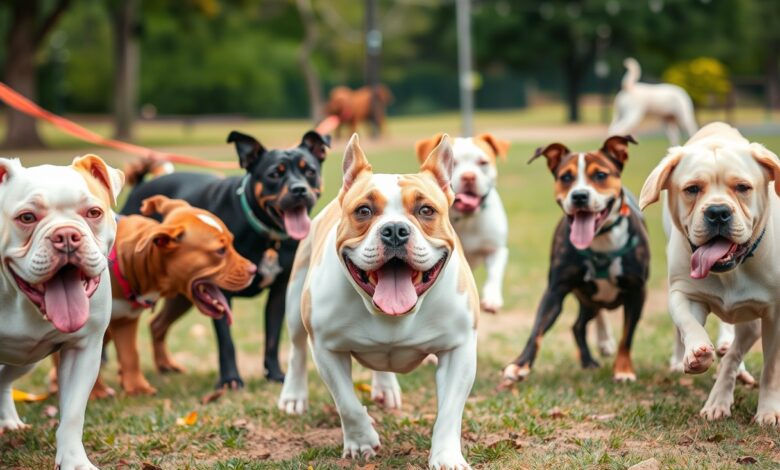
It’s natural to wonder if your American Bully will get along with other dogs, especially given their strong and muscular appearance. While these dogs can be loving and loyal companions, their socialization is crucial for fostering positive interactions. In this blog post, we’ll explore how to effectively socialize your American Bully with other dogs, ensuring they become well-adjusted and friendly members of your family. With the right tips and techniques, you can help your American Bully build strong connections with their canine counterparts.
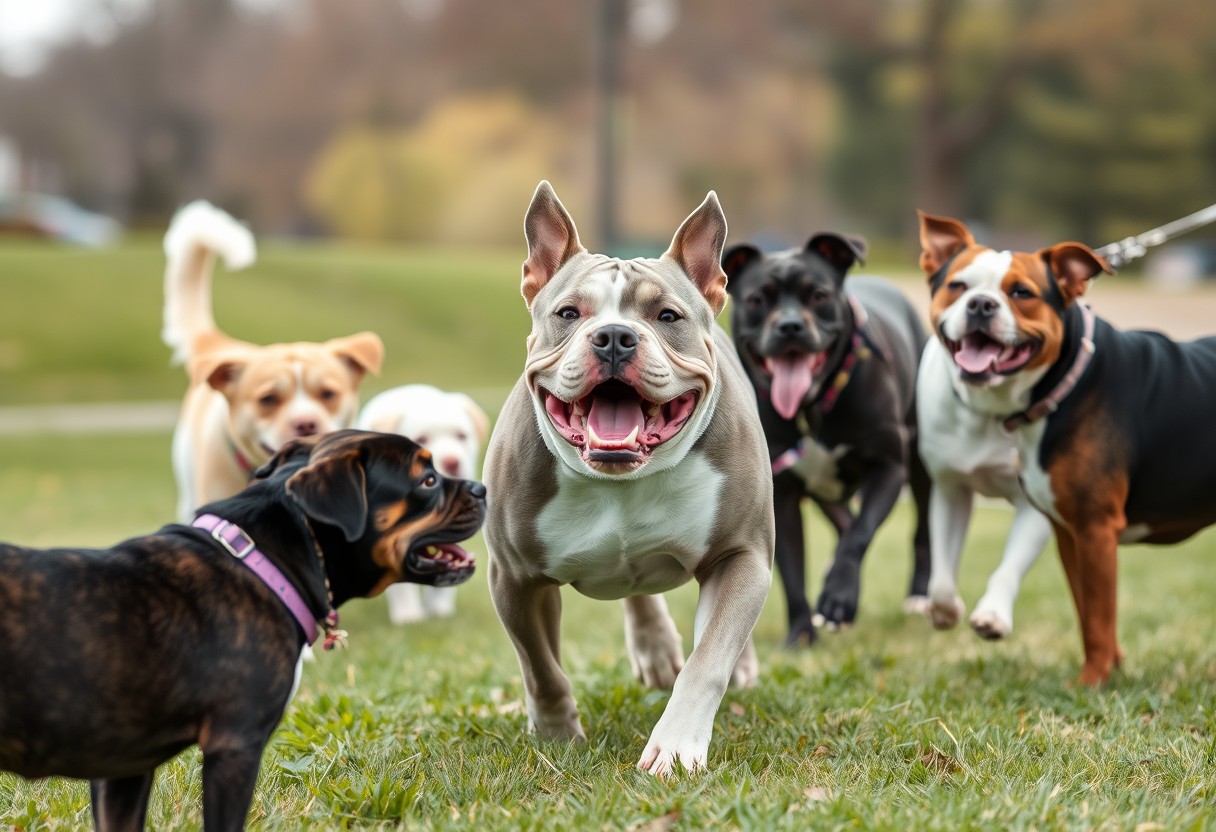
Key Takeaways:
- Early Socialization: Introduce your American Bully to various dogs and environments early in their life to foster positive interactions.
- Positive Reinforcement: Use rewards such as treats and praise during encounters with other dogs to encourage friendly behavior.
- Supervised Playdates: Arrange controlled playdates with well-mannered dogs to ensure safe and enjoyable interactions.
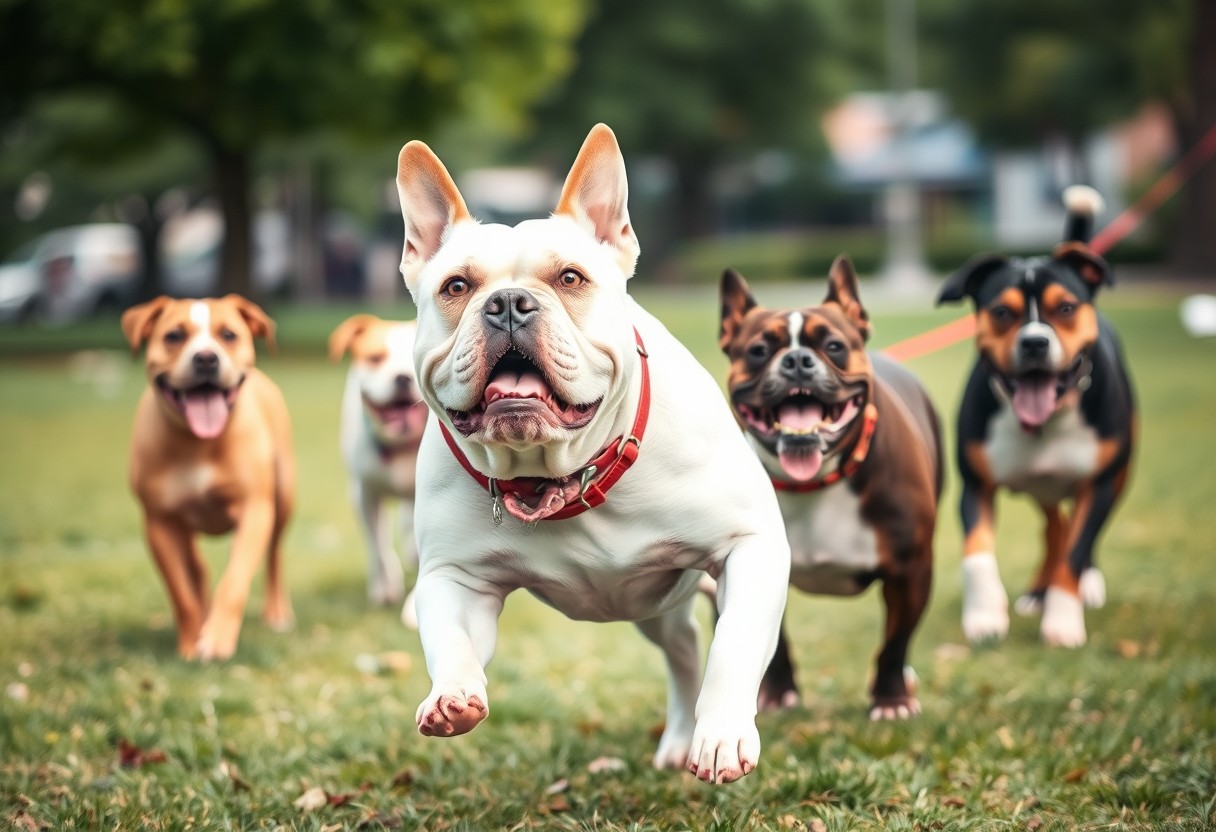
Understanding the American Bully
Before you bring an American Bully into your home, it’s crucial to understand what this breed is all about. The American Bully is a relatively new breed that has been developed for its amiable demeanor and loyalty. Despite its muscular appearance, this breed often surprises people with its gentleness and affection, making them a popular breed for families and individuals alike.
Breed Characteristics
For many, the American Bully is recognized for its wide stance, strong build, and *short, smooth coat*. Generally medium-sized, they come in various colors and have a compact frame that exudes strength and agility.
Temperament Overview
With a friendly and *people-oriented nature*, American Bullies typically thrive in social settings. They’re known for their loyalty and are often described as both *affectionate* and *playful*, making them excellent companions. However, they do need proper training to manage their *strong personalities*.
Understanding the temperament of the American Bully is crucial for any prospective owner. These dogs are often *loving* and *devoted*, but without the right guidance, they can be possessive or overly energetic, especially around other animals. It’s vital to engage in early *socialization* and consistent training; this helps ensure your bully matures into a well-adjusted adult. With a *firm but loving approach*, you can harness their natural instincts in a positive way, leading to a harmonious relationship with not just you but also with other pets and people.
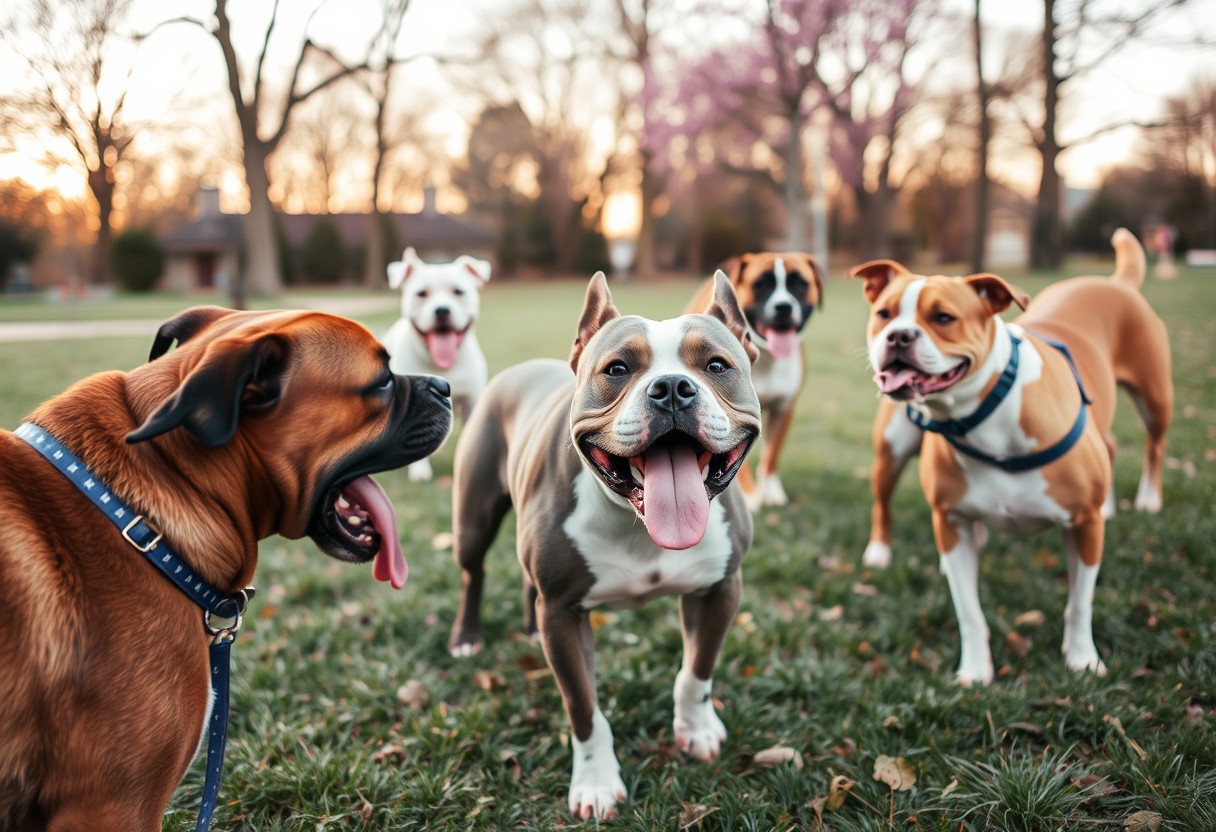
Importance of Socialization
Clearly, socialization is critical for American Bullies to thrive in different environments and interact appropriately with other dogs and people. Introducing your dog to various situations, people, and other pets helps prevent behavioral issues and promotes a confident and well-adjusted companion. Proper socialization not only fosters good manners but also strengthens the bond between you and your dog, paving the way for a happier life together.
Benefits for American Bullies
The benefits of socialization for your American Bully are immense. By engaging them with other dogs and humans at a young age, you lead them towards being less fearful and less aggressive. Socialization promotes emotional stability, reducing anxiety and creating a friendly demeanor that can make your dog a joyous part of any gathering.
Early Socialization vs. Later Training
Later socialization can sometimes lead to ingrained habits that are much harder to change, making it uniquely vital to start early. When you focus on socializing your American Bully during their critical developmental stages, you’ll set a solid foundation for positive interactions and behavioral traits. If you delay this process, you might find your dog becomes less adaptable to new situations or experiences.
Socialization is all about teaching your American Bully to be comfortable in diverse scenarios and with various companions. Early exposure, ideally between 3 and 14 weeks, is crucial because it helps to shape their experiences and reactions. Failing to socialize your dog adequately may lead to fearfulness, aggression, or a predisposition to behavioral issues. On the other hand, beginning this process later may require more intensive training to correct these behaviors. Hence, making early socialization a part of your routine is crucial to ensuring that your American Bully develops into a well-adjusted and friendly dog.
Tips for Socializing Your American Bully
Not every American Bully is naturally good with other dogs, but with the right approach, they can become great companions. Here are some helpful tips for socializing your dog:
- Start socialization early
- Gradually introduce to new dogs
- Use positive reinforcement
- Monitor playdates closely
- Be patient and consistent
This will help improve your American Bully’s interactions and confidence around other dogs.
Gradual Introductions
With gradual introductions, you can create a positive experience for your American Bully when meeting other dogs. Start by allowing your dog to meet a calm, well-socialized dog in a controlled environment. Maintain a safe distance at first, then slowly reduce the space between them, observing their body language. Always supervise the encounter, and keep sessions short to avoid overwhelming your American Bully.
Positive Reinforcement Techniques
American Bullies respond well to positive reinforcement, making it an effective tool for socialization. Use treats, praise, and playtime to reward your dog for good behavior when interacting with other dogs. This encourages them to associate social situations with pleasurable experiences, building their confidence.
Another important aspect of positive reinforcement is ensuring that your American Bully feels rewarded for calm behavior. Make sure to praise and reward your dog immediately when they display friendly interactions, such as wagging their tail or playing nicely. You can even bring along some of their favorite toys or treats during social outings, amplifying the positive experience. Recall, a well-socialized American Bully is a happy American Bully, so embracing these techniques will ensure they thrive in social environments!
Common Misconceptions
After exploring the American Bully breed, it’s important to address some common misconceptions. Many people mistakenly believe that all American Bullies are inherently aggressive or unsuitable for socialization with other dogs. This idea stems from stereotypes and media portrayals rather than the true nature of the breed. With the right training and socialization, your American Bully can be a loving and sociable companion.
Myth vs. Reality
Myth: All American Bullies are aggressive and cannot get along with other dogs. Reality: With proper socialization and positive experiences, your American Bully can thrive in a multi-dog environment.
Understanding Aggression
An American Bully’s behavior often gets misinterpreted as aggression when, in fact, it may stem from fear, insecurity, or lack of exposure to other dogs. Understanding your dog’s body language and social cues is crucial for fostering a positive environment. If your American Bully seems aggressive, be sure to assess their triggers and consider seeking professional training to build their confidence and ease their interactions. Focus on encouraging positive behaviors and establishing trust to nurture a happy, healthy relationship.
Understanding how to differentiate between true aggression and fear-based reactions is key for dog owners. An American Bully may growl or bark not necessarily out of aggression, but rather as a way to express discomfort. By socializing your dog from a young age and exposing them to a variety of positive encounters with other dogs, you can help eliminate fear and anxiety. Always observe your dog’s body language, and if issues arise, consider working with a professional trainer who can provide specific strategies tailored to your American Bully’s needs.
Signs of a Well-Socialized Dog
Once again, recognizing the signs of a well-socialized dog is crucial for creating a harmonious environment for both your pet and others. A well-socialized American Bully will exhibit calmness in new situations, approach unfamiliar people and dogs with a friendly demeanor, and demonstrate confidence in different environments. Observing these traits can alleviate any concerns about your dog’s behavior in social settings, ensuring a pleasant experience for everyone involved.
Friendly Behaviors
To identify friendly behaviors in your American Bully, watch for wagging tails, relaxed body language, and open, inviting postures. These behaviors indicate that your dog is ready to engage positively with others. Additionally, playful barking or gentle nudging can signal that your pet is eager to socialize and make new friends.
Interactions with Other Dogs
Signs of positive interactions with other dogs include taking turns in play, mirroring actions, and maintaining relaxed body language. When your American Bully approaches other canines without showing aggression or fear, it’s a strong indication of their comfort level.
Other important signs to look for are multiple play styles, which show that your dog adapts to different dog personalities. If your American Bully invites dogs to play by bowing or engaging in chase, it reflects positive social skills. Conversely, watch for caution or silence when around other dogs; if your Bully hides or tries to avoid interaction, it could indicate a need for further socialization. Always monitor interactions closely and support your dog’s growth through gradual exposure to different environments and experiences.
When to Seek Professional Help
For some American Bullies, socialization can be particularly challenging, and it’s imperative to recognize when it’s time to consult a professional. If you notice persistent signs of aggression towards other dogs or excessive fear, seeking help from an experienced trainer can make a significant difference. Professional guidance can enhance your efforts and ensure a safer environment for your dog and others.
Recognizing Challenges
The key to successful socialization is recognizing when your American Bully is struggling. If your pup exhibits uncontrollable barking, lunging, or fear responses around other dogs, these may be clear indicators of underlying issues needing attention. Early intervention can prevent further behavioral problems and help your dog integrate more successfully with others.
Finding the Right Trainer
With so many trainers available, finding one who understands the unique personality and needs of your American Bully is crucial. Look for trainers who specialize in positive reinforcement techniques and have experience with bully breeds, as they can offer customized strategies that align with your dog’s behavior.
Understanding the importance of choosing the right trainer can greatly enhance your American Bully’s socialization journey. A well-reviewed trainer should emphasize positive reinforcement methods while avoiding harsh techniques that could backfire. Be sure to check their credentials and experience with bully breeds. You want someone who not only addresses your dog’s specific challenges but also promotes a loving, supportive environment for effective learning and growth.
Final Words
Summing up, ensuring your American Bully gets along well with other dogs takes patience and proper socialization. By gradually introducing them to new dogs, observing their behavior, and rewarding positive interactions, you can foster friendliness and reduce any aggressive tendencies. Bear in mind, every dog has its personality, so take your time and celebrate the small victories. For more insights, check out How Friendly are American Bullies with Other Animals? to help your canine companion become the best version of themselves!
FAQ
Q: Are American Bullies typically good with other dogs?
A: American Bullies can be good with other dogs, but it greatly depends on their individual temperament, socialization experiences, and training. Early socialization is crucial; exposing them to various breeds, sizes, and types of dogs from a young age helps them learn appropriate behaviors and develop positive relationships. However, some American Bullies may have a higher prey drive or territorial instincts, which can affect their interactions. Responsible ownership and constant supervision are important to ensure they are well-adjusted and comfortable around other dogs.
Q: What socialization tips can help an American Bully get along with other dogs?
A: To help an American Bully get along with other dogs, start with early socialization during their puppy stage. Introduce your dog to a variety of environments, people, and other animals in a controlled manner. Attend puppy classes or dog training sessions where they can learn how to interact playfully and positively with other dogs. Use positive reinforcement techniques, such as treats and praise, to encourage good behavior when interacting with other dogs. Additionally, always monitor their body language during introductions and allow them to set their own pace for interactions to avoid overwhelming them.
Q: How can I handle my American Bully if they show aggression towards other dogs?
A: If your American Bully shows signs of aggression towards other dogs, it’s important to address the behavior promptly. First, ensure you’re using appropriate training techniques, such as reinforcing calm behavior and avoiding punishment. Consider seeking the help of a professional dog trainer or behaviorist who has experience with breed-specific behaviors. Gradually desensitize your dog to the triggers that cause aggression, such as leash reactivity or fear, by starting at a distance and decreasing it as they become more comfortable. Additionally, always prioritize safety by using a sturdy muzzle and leash when necessary and choosing low-stress environments for interactions.



